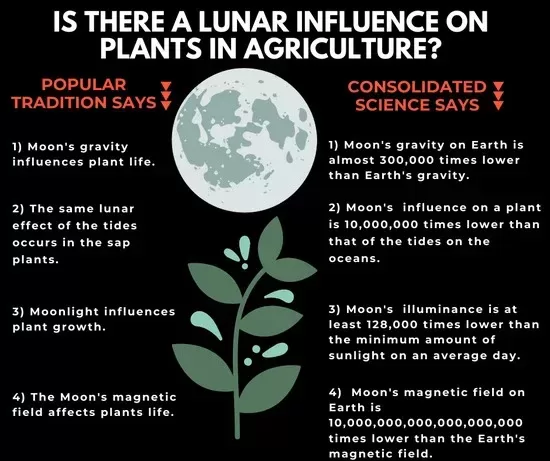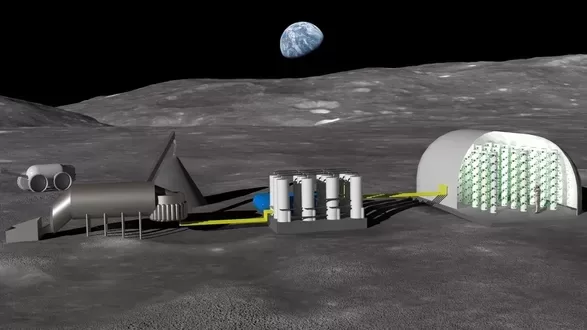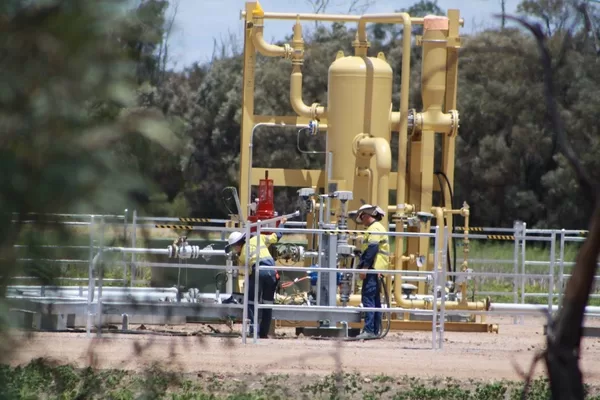Welcome back to the moon! NASA’s Artemis III mission is not just about revisiting our lunar neighbor after half a century; it’s about setting foot into a new era of space exploration, one that involves agriculture on the lunar surface. Lunar agriculture will be big news in future with people watching the crop because so much will depend on it, including the crew’s life. In a groundbreaking move, NASA has announced that plants will be grown on the moon during the Artemis III Mission in 2026.
This initiative, named Lunar Effects on Agricultural Flora (LEAF), marks a significant step forward in our understanding of sustaining life beyond Earth. LEAF isn’t just about planting a few seeds and watching them grow. It’s a meticulously planned project aimed at collecting invaluable data on plant growth and development in the lunar environment.
As astronauts embark on their lunar journey, they will carry with them the seeds of various plant species, ready to be sown on the moon’s surface. The insights gathered from LEAF will not only inform us about the feasibility of growing crops for human consumption in space but will also shed light on using plants for life support systems during extended space missions. It’s a bold experiment that could revolutionize how we sustain life during long-duration space travel, paving the way for future lunar colonies and interplanetary exploration.
The good news is that analysis of lunar samples returned to Earth in the past by moonwalkers and robots shows sufficient essential minerals are available for plant growth, apart from nitrogen compounds. The bad news: lunar soil (or ‘regolith’) compacts in the presence of water, creating problems for plant germination and root growth.
Hydroponic farming emerges as a viable solution. This method bypasses traditional soil-based agriculture by nourishing plant roots directly with nutrient-enriched water. Nonetheless, the opportunity remains to harness lunar regolith through the principle of ‘in-situ resource utilization’—essentially, making the most of what the lunar surface has to offer for sustainable living.


Image supplied by What Has Been Thought and Taught on the Lunar Influence on Plants in Agriculture? Perspective from Physics and Biology
Australians leading the Lunar Agriculture project
In this ambitious endeavor, collaboration is key. Scheduled for liftoff in September 2026, the LEAF project brings together a diverse consortium of partners, each bringing their unique expertise to the table. At the heart of this collaboration is the Australian Research Council Centre of Excellence in Plants for Space (P4S), headquartered at the esteemed University of Adelaide. Spearheading the initiative is Space Lab Technologies, leading the charge alongside a consortium that includes the University of Adelaide, La Trobe University, and NASA’s Kennedy Space Center, all esteemed partners within the P4S network.
But the LEAF project doesn’t stop there. It extends its reach to encompass a broader spectrum of expertise and resources. Partnering with the United States Department of Agriculture, the University of Colorado Boulder, and Purdue University, LEAF ensures a comprehensive approach to tackling the challenges of lunar agriculture.
Norway’s Solsys Mining spearheads a groundbreaking ESA Discovery project aimed at exploring innovative methods for utilizing lunar soil. The focus? Transforming this celestial resource into fertilizer conducive to plant growth in space environments. The Solsys Mining team has already cultivated beans using simulated lunar highland regolith as a nutrient source.


In this artist’s rendition, on the left side, a mechanical sorting area is depicted for processing the regolith, leading to the central module where more sophisticated procedures like chemical leaching take place. Subsequently, the extracted nutrients would be dissolved in water and transferred to the hydroponic garden, shown on the right side of the illustration. (Image credit: Solsys Mining)
The project titled ‘Enabling Lunar In-Situ Agriculture by Producing Fertilizer from Beneficiated Regolith’ spearheaded by Solsys Mining, in collaboration with Norway’s Geotechnical Institute (NGI) and Centre for Interdisciplinary Research in Space (CIRiS), delves into a comprehensive examination of mechanical, chemical, and biological techniques. These methods are aimed at extracting essential mineral nutrients from the regolith. To optimize its utility, valuable elements may require concentration, while undesirable ones would be systematically removed.
The project benefits from additional analysis provided by the P4S node at the University of Western Australia, expanding the project’s scope and depth of research. This collaborative effort underscores the importance of international cooperation in pushing the boundaries of space exploration and scientific discovery. Together, these partners are poised to revolutionize our understanding of sustainable agriculture in extraterrestrial environments.
Agriculture in space to support human crews
“This research will be a pivotal step toward understanding how we might use agriculture in space to support human crews, paving the way for sustained lunar exploration and even missions to Mars,” remarked Christine Escobar, Vice President of Space Lab and lead of the LEAF project. With enthusiasm and determination, Escobar highlights the significance of this mission in shaping the future of space exploration and habitation.
Jenny Mortimer, Associate Professor of Plant Synthetic Biology at the University of Adelaide and Chief Investigator at P4S, emphasizes the mission’s importance in unraveling the mysteries of plant behavior in extraterrestrial environments. Mortimer envisions LEAF as a crucial endeavor that will provide invaluable insights into how plants adapt and thrive beyond Earth’s confines. Central to the mission’s objectives is the creation of robust, self-sustaining environments capable of nurturing plant life in the harsh conditions of space.
“The data we capture from the mission, both from the lunar surface and what we learn when we analyze the samples upon return, will help us to design the lunar and Martian crops of the future,” Mortimer asserts. With a forward-looking perspective, she underscores the transformative potential of LEAF in shaping the agricultural landscapes of distant worlds. Through meticulous observation and analysis, Mortimer and her colleagues aim to lay the groundwork for sustainable food production in space, setting the stage for humanity’s expansion into the cosmos.
Growing Plants in Extreme Environments
Professor Mathew Lewsey, affiliated with P4S and the La Trobe Institute for Sustainable Agriculture and Food, underscores the LEAF investigation’s role in unraveling the mysteries of plant growth in extreme environments.
“In the LEAF investigation, we aim to gain insights into how plants adapt and thrive in extreme conditions,” Professor Lewsey explains. “The seeds we send to the Moon will germinate in an enclosed capsule, meticulously monitored via remote cameras.”
He elaborates on the methodology, stating, “Our dedicated team of scientists will meticulously collect data on the plants’ growth on the lunar surface, closely observing their size and morphology. Upon their return to Earth, we will conduct genetic and metabolic analyses of individual plant cells.”
Professor Lewsey emphasizes the practical implications of this research, stating, “By leveraging this knowledge, we can enhance plant resilience to radiation and other environmental challenges, ultimately advancing our ability to sustain life in space.” This approach holds promise for addressing the unique challenges posed by extraterrestrial environments and laying the groundwork for future space exploration missions.
Plant Growth Chamber
The LEAF experiment features a sophisticated plant growth chamber boasting an isolated atmosphere. Within this controlled environment, a diverse array of plant species, including red and green varieties of Brassica rapa (Wisconsin Fast Plants®), Wolffia (duckweed), and Arabidopsis thaliana, are poised to flourish. These carefully selected specimens represent a vital component of the mission’s scientific endeavors.
As part of the LEAF program, a series of experiments will be conducted, aligning with P4S’s overarching goals. These initiatives aim to pioneer novel plant-based foods and biomanufacturing technologies, facilitating human exploration into the depths of space while simultaneously promoting sustainability and efficiency here on Earth.
Matthew Gilliham, Director of P4S and Professor at the University of Adelaide, emphasizes the collaborative nature of LEAF’s success. “LEAF has been made possible by bringing together world-leading skill sets in engineering, plant science, molecular analysis, and space logistics,” he notes. This interdisciplinary approach epitomizes P4S’s mission to forge new frontiers for humanity’s exploration of space.
Gilliham underscores the broader implications of LEAF’s research, stating, “The learnings and technologies we gain by growing plants in a completely closed loop, as we must do in space, will provide new options for improving sustainable plant production and processing here on Earth.” This dual-focus approach holds promise for revolutionizing agricultural practices both in space and on our home planet, ushering in a new era of innovation and sustainability.
Australian Space Agency
Enrico Palermo, the Head of the Australian Space Agency, expressed his enthusiasm regarding the inclusion of Plants for Space in the Artemis mission, highlighting it as a significant endorsement of Australia’s burgeoning space sector.
“This marks another milestone in Australia’s journey towards becoming a leading player in space research and innovation,” remarked Mr. Palermo. “It underscores the growing recognition of our capabilities and the pivotal role we can play in international missions of historic significance.”
Moreover, Palermo emphasized the dual benefits of Plants for Space initiatives, stating, “Equally important is the potential of the technologies and practices developed through Plants for Space to address pressing challenges here on Earth.” He noted their potential to enhance food security and alleviate water scarcity, underscoring the tangible impact that space research can have on improving lives and fostering sustainability for all Australians.
Monitoring moonquakes & conditions
LEAF stands as a beacon of innovation and collaboration, poised to unlock the secrets of lunar agriculture and pave the way for sustainable exploration beyond Earth’s bounds. As one of three groundbreaking science instruments selected for deployment on the Moon’s surface as part of NASA’s Artemis III mission, LEAF joins forces with the Lunar Environment Monitoring Station and the Lunar Dielectric Analyzer. Together, these instruments represent the vanguard of scientific inquiry, positioned near the lunar South Pole to embark on a journey of discovery.
The Lunar Environment Monitoring Station, equipped with a compact, autonomous seismometer suite, will tirelessly monitor ‘moonquakes,’ providing invaluable insights into the lunar terrain’s dynamics. Meanwhile, the Lunar Dielectric Analyzer will probe the regolith’s ability to propagate an electric field, shedding light on the presence of lunar volatiles, particularly ice.
As humanity sets its sights on the stars, these pioneering instruments symbolize our relentless pursuit of knowledge and our unwavering commitment to pushing the boundaries of exploration. Through collaborative efforts and cutting-edge research, we stand on the brink of a new era in space exploration—one where the mysteries of the cosmos are within our grasp, and the possibilities are limitless.
Further resources from NASA
Moon Farming podcast by NASA
Artemis III: NASA’s First Human Mission to the Lunar South Pole
Further Reading on this site
Proof that weather modification exists
Global Food Production Dilemma: Grow & Buy Local
Circular economy booming and going cashless





